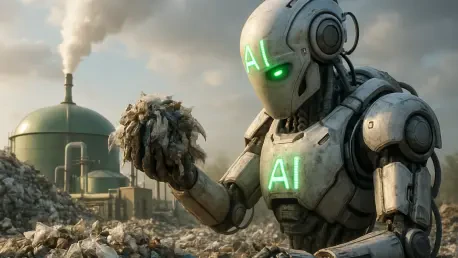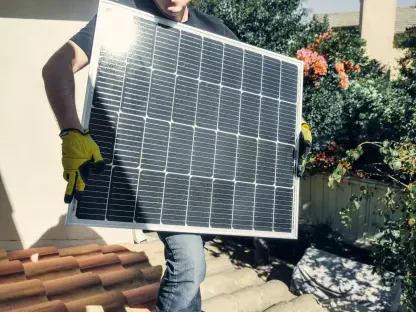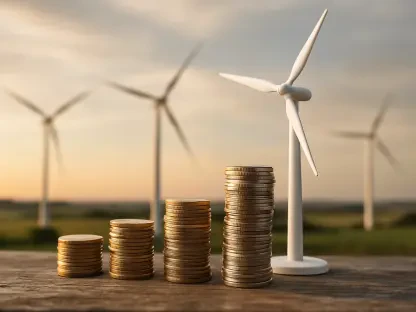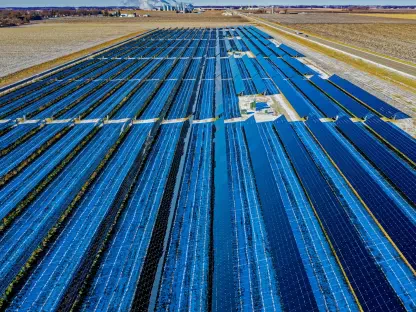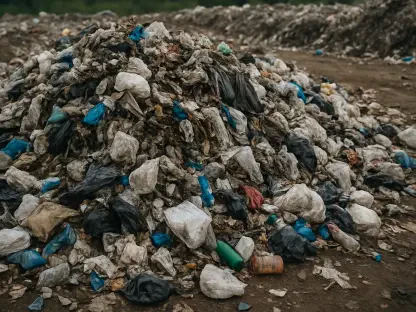In an era where climate change is a significant concern, innovative solutions to reduce waste and generate clean energy are crucial. The field of waste management, traditionally seen as a labor-intensive industry, is undergoing a transformation thanks to the advent of artificial intelligence (AI). AI is being harnessed to turn waste, particularly from the construction and manufacturing sectors, into renewable energy sources. This shift is driven not only by environmental demands but also by economic incentives, as businesses seek to reduce operational costs while adhering to sustainability standards. The pioneering efforts of organizations such as Woodchuck showcase how AI can be used to divert vast amounts of waste from landfills and transform it into high-quality biomass that can fuel the clean energy grid.
The statistics related to construction waste alone make a strong case for rethinking waste management practices. In the United States, over 41 million tons of wood waste are generated annually by the construction sector, most of which unfortunately ends up in landfills. This represents not only a missed opportunity for energy production but also a significant environmental liability. By implementing AI-driven solutions, such as those developed by Woodchuck, industries can better identify, sort, and process waste materials. This technology enables a more efficient waste management process that aligns with the growing pressures on businesses to adopt sustainable practices. In this context, AI becomes a catalyst for change, turning waste into a valuable resource, reducing carbon footprints, and supporting the transition toward renewable energy.
The Role of AI in Waste Management
AI’s role in transforming waste management is pivotal in creating a transparent and efficient system. Leveraging advanced AI models, companies can sort through waste with unprecedented accuracy and speed. Woodchuck, for example, utilizes AI to scan and classify wood waste, streamlining the process of converting this material into biomass. This AI-driven approach not only enhances operational efficiency by reducing the time and labor required to manage waste but also provides key insights into the types and quantities of materials being processed. Reporting features associated with AI solutions generate data on CO2 reductions and BTUs of clean energy produced, which can prove invaluable for stakeholders looking to align with environmental goals.
Moreover, AI technology is helping to create a circular economy where waste is seen as a resource rather than a byproduct to be discarded. This perspective shift is exemplified by partnerships between companies like Woodchuck and energy producers, which are fundamental to ensuring the scalability of such initiatives. By repurposing waste into biomass that complements existing renewable sources, the dependence on fossil fuels is diminished, and the energy grid’s resilience is improved. Such innovations integrate seamlessly with current initiatives to decarbonize energy systems, highlighting the significance of AI in driving industrial revolutions that prioritize sustainability alongside economic growth.
The Economic and Environmental Impact
Harnessing AI to convert waste into renewable energy presents a dual opportunity: economic benefits and environmental conservation. From an economic standpoint, companies adopting AI in their waste management strategies can witness substantial cost reductions. By diverting waste from landfills and processing it in-house, businesses can lower waste hauling expenses by up to 30%. Concurrently, compliance with ever-stringent environmental regulations becomes more manageable, enabling companies to meet and exceed sustainability requirements that are increasingly demanded by both consumers and regulators.
From an environmental perspective, the impact of converting waste into biomass is significant. Such processes reduce the reliance on landfill disposal, thus minimizing methane emissions and other pollutants. The shift towards renewable energy, supported by AI-managed waste conversion, aligns with global endeavors to combat climate change by reducing greenhouse gas emissions. These transformations contribute to a cleaner, more sustainable environment, where resource cycles are optimized to their fullest potential. Consequently, businesses not only contribute positively to ecological goals but also fortify their reputations as leaders in sustainability and corporate responsibility.
Real-World Applications and Future Prospects
The theoretical benefits of AI in waste management are already being realized in practical, real-world applications, demonstrating both impact and feasibility. For instance, Woodchuck’s collaborations with local communities in mitigating disaster recovery efforts emphasize the adaptability and practicality of AI solutions. After a destructive ice storm, Woodchuck’s technology was utilized to convert leftover wood debris into renewable energy, a clear demonstration of climate resilience paired with sustainable innovation. Moreover, strategic alliances with companies like NorthStar Clean Energy enable the integration of biomass into current energy mixes, bolstering the stability of renewable energy sources.
Looking ahead, these transformative technologies signal a paradigm shift where waste material is consistently repurposed rather than discarded. The successful implementation of AI in these processes invites further exploration into other waste types that could be similarly transformed. Such continuous advancements in AI-driven waste management promote a culture of innovation while addressing pressing environmental challenges. The potential scalability of these technologies means that the positive effects witnessed on small scales could eventually expand globally, reaffirming the dedication to a sustainable future that leverages the best of technological innovations.
Paving the Way for Sustainable Change
In today’s world, where climate change is a pressing concern, finding innovative ways to cut waste and create clean energy is essential. Waste management, once seen mainly as a labor-heavy task, is now being revolutionized by artificial intelligence (AI). AI is transforming waste from areas like construction and manufacturing into renewable energy sources. This change is fueled not just by environmental needs but also by economic benefits, as companies aim to lower costs while meeting sustainability goals. Innovative organizations like Woodchuck highlight AI’s role in diverting large amounts of waste from landfills and converting it into premium biomass for the clean energy grid.
The sheer volume of waste from construction underscores the need for updated waste management. In the U.S., over 41 million tons of wood waste are produced annually by construction, much of which goes to landfills, missing the chance for energy harvesting and posing environmental risks. AI solutions like Woodchuck’s help industries efficiently sort and process waste, fostering a sustainable business approach. AI is thus a driving force, making waste a valuable asset, cutting carbon footprints, and aiding the switch to renewable energy.
